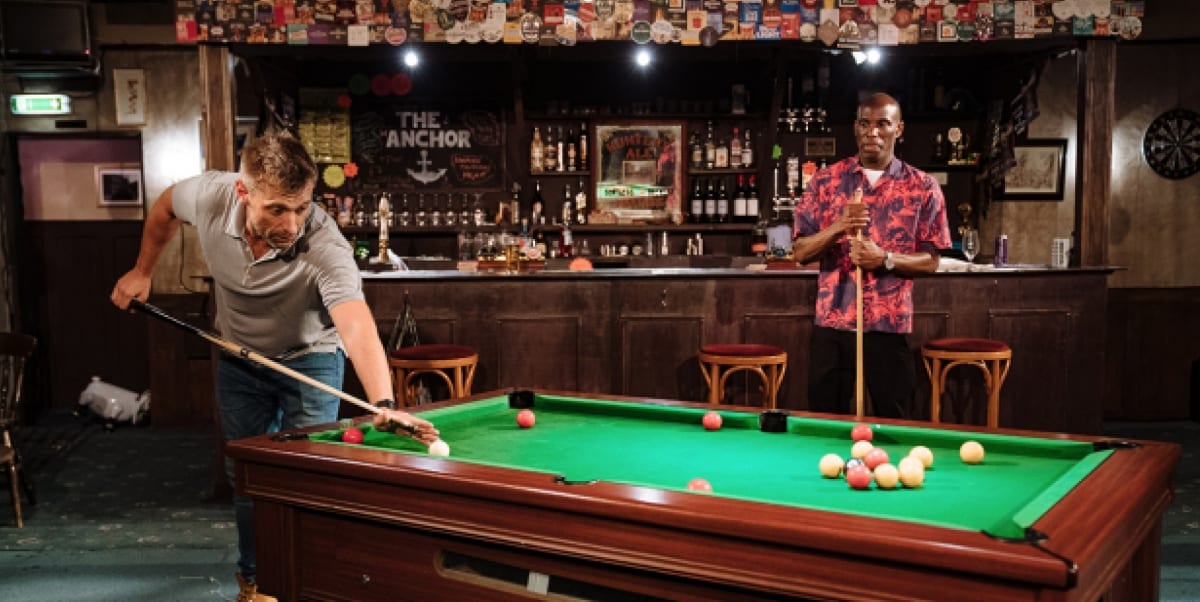I’ve been to theatres in pubs before. Pub theatres are quite common, after all. But I’ve never seen a theatre converted into a pub before. This has happened to the small Bunker Theatre, not far from London Bridge station – but only for a limited time. During the run of this production, “The Bunker” has become “The Anchor”. The normal seating, on three sides of the stage, has been left in place. But an actual bar, with real drinks, has been set up on the stage, and around the periphery, there are some small, low tables, at which theatregoers who arrive early can take their seats and sip their drinks while tucking into bowls of nibbles. Apart from the cheese cubes, these are not very tasty. But that is my only criticism of this amazing production.
The Anchor pub has been sold for redevelopment, and the action takes place on the last night, when the landlord, the two bar staff and two of the regulars have the place to themselves (in fact, the doors are locked). The publicity material for this play expresses concern about the closure of so many pubs and the consequent loss to our communities when these centres of social life disappear. So I was rather expecting something sentimental and nostalgic. It was exactly the opposite. This drama pulses with raw emotion. Sitting at a table, as it were in the pub itself and so close to the actors, was an immersive experience, and not an altogether comfortable one. Amid the camaraderie and the karaoke, as pints are poured (only one barrel of “fizzy piss” is left) and shorts are knocked back, resentment and antagonism spillover. Emotions run high, culminating in a really menacing threat of violence.
All this is conveyed in brilliantly written dialogue, replete with expletives, which to my ears captures the true vernacular of modern London – and, for that matter, of Northern Ireland. One of the ‘regulars’ is a scaffolder from that province. The dialogue sparkles with wit and repartee, interspersed at times with touching pathos, and at other times with aggression. There is some pretty wild and abandoned dancing too! The characters are a disparate bunch of different ages, sexes and experiences – the disillusioned landlord, the young but capable barmaid, her diminutive and none too bright assistant, the elderly bar fly, and the hard-bitten working man. Their vulnerabilities are exposed in lively banter and in moving soliloquies, by a cast who are uniformly good. But the physicality of Valentine Hanson is quite amazing.
All in all, a remarkable coup de théâtre.

